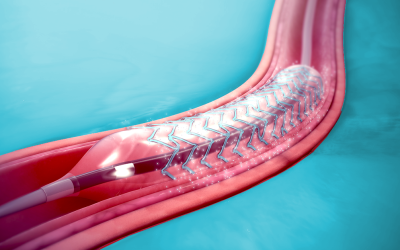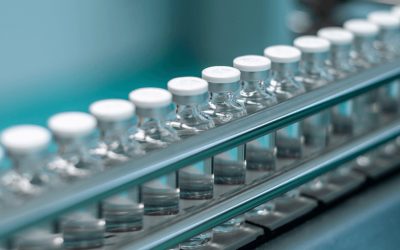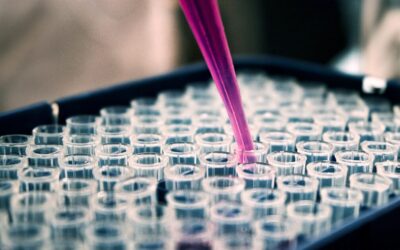Latest News
Pharmapack Europe 2025
Helen Friis-Mikkelsen and Martin Friis-Mikkelsen will be representing SAXOCON at Pharmapack Europe 2025, stand S23, on 22 &23 January. Stop by our stand and find out how we can help you ensure your packaging is safe and compliant.
Containers and other primary packaging systems for drug products must be designed, tested, and documented as not affecting the safety or quality of the finished product.
Both the EMA and the FDA have increased their focus on nitrosamine impurities in packaging materials. This scrutiny increases the burden on manufacturers to know what their packaging materials are made of, whether they can leach nitrosamines, and how to mitigate potential problems.
Our services, designed and run by our team of experts, provide you with everything you need to establish and document compliance with regulatory requirements for primary packaging, fill in the gaps in your supply chain information, and assess your packaging and storage processes for the presence of nitrosamines.
Find out more about our pharmaceutical services here.
Technically Unavoidable Particles
Technically Unavoidable Particles (TUPs) are always present in excipients. Concern regarding their presence has increased dramatically in recent years due to several US FDA warning letters to pharmaceutical companies, highlighting adverse findings during inspections.
SAXOCON can help pharmaceutical manufacturers develop their Technically Unavoidable Particle Profile (TUPP). These profiles help to proactively search for foreign particles and provide suppliers with the necessary information to support proper risk mitigation. TUPPs are a proven method of open communication with raw material suppliers that helps both excipient and pharmaceutical manufacturers ensure product safety.
Because TUPs are always present, they must be accounted for at all stages of production, from pre-production material sourcing to production equipment wear to packaging and storage. Typically, the presence of foreign matter in excipients and other chemical raw materials is seen as a threat to final pharmaceutical product quality. Such particles can present a real danger to patient safety and violate regulatory requirements, disrupt supply chains, lead to drug shortages, and cause reputational damage to the manufacturer. However, not all such particles are dangerous, according to the International Pharmaceutical Excipient Council (IPEC). Therefore, pharmaceutical manufacturers need to ensure that the TUPs in their products do not impact patient safety and avoid the worst-case scenario of an entire batch recall.
Find out more about how we can help you ensure product safety here.
SAXOCON at ISO TC 194
From October 21–25, SAXOCON’s Chief Technical Officer, Carsten Baun Senholt, will participate in the ISO Technical Committee 194 (ISO TC 194) plenary meeting in Paris.
Carsten is one of the many experts contributing to the scientific and technical collaboration needed to develop coherent, scientifically valid, and effective worldwide medical device standards.
This meeting will discuss standardising the approach to the biological and clinical evaluation of medical and dental materials and devices, together with standardising the biological test methods applicable to such materials and devices. Furthermore, there will be a discussion of the best clinical practice principles to use when conducting clinical investigations of the human users of these devices.
Our involvement in ISO TC 194 keeps us at the cutting edge of scientific and regulatory developments, allowing us to provide our clients with high-quality services that enhance product quality and safety.
Read more about our medical device services here.
Particle Count Testing
SAXOCON provides microscopic particle count testing in accordance with Method 2 in USP-NF (788). Testing is conducted in our Class N2 clean workspace according to our internal protocols to guarantee the precise identification and measurement of particles that satisfy ISO standards and are essential for preserving product safety.
Our service covers:
- Preparation and filtration of samples
- Obtain images of the filters with optical microscopy
- Data processing of the images and a particle count of the entire surface of the filter(s
- Delivery of a final report and data evaluation
Final reports are delivered within a maximum of five working days after SAXOCON has received the samples.
USP-NF (788) sets the standards for acceptable particulate matter levels in injectable drug products. Following these standards allows you to ensure your products are free from harmful levels of particulate contamination, which can cause adverse effects when introduced into the bloodstream.
Knowing what is in your drug products is essential to ensuring their safety. Particle contamination from packing, production tools, or delivery devices can occur at any point in the manufacturing process, packaging, or storage. You need to know what particles are present, where they come from, and how to mitigate or eliminate them to get your items to market, keep them there, and avoid last-minute delays.
Read more about our particulate services here.
Ensure Product Safety through Rigorous Particulate Contamination Testing
Pharmaceutical and medical device manufacturers need to ensure the safety of the materials used in their products. Particulate contamination is a risk in production facilities. Good Manufacturing Practice (GMP) and proper risk management require the identification of root causes and evaluating the impact that particulate matter findings can have on product safety. Understanding the risk as quickly as possible is crucial when deciding whether to release or recall affected product batches.
There are several international standards governing particulate testing and it is a daunting task to know where to start to ensure the safety of your products. SAXOCON has the facilities and expertise to quickly process and assess unexpected particulate findings and provide a mitigation strategy. Once completed, we send a comprehensive report of the results.
Why Particulate Contamination Testing Matters:
- Patient Safety: Contaminants can cause severe adverse reactions in patients, leading to complications or even life-threatening situations.
- Regulatory Compliance: Strict guidelines from agencies like the FDA and EMA mandate rigorous testing to ensure products meet safety standards.
- Product Integrity: Maintaining the highest levels of purity ensures the efficacy and reliability of medical devices and pharmaceuticals.
- Brand Reputation: Consistent quality control fosters trust and loyalty among healthcare professionals and patients.
Check out how we can help here and here.
New Regulations for Silicone
Last fall, the European Chemicals Agency (ECHA) won a decisive judgement at the European Court of Justice. This judgement allows the ECHA to classify silicone oligomers, specifically D4, D5, and D6 siloxanes, as Persistent Bioaccumulative and Toxic substances (PBT), Very Persistent and Very Bioaccumulative substances (vPvB), and as suspected to be toxic to human reproduction.
On 16 May 2024, the European Commission approved the new silicone regulations under REACH. Therefore, if you use silicone in the medical devices you produce, you need to be aware that they are now subject to scrutiny by the ECHA and classified as harmful.
Silicone oligomers are an unavoidable result of silicone production processes and must be accounted for before any medical device containing silicone can be approved for sale in the EU.
At SAXOCON, we have the expertise to properly risk-assess the silicone in your products to determine if it meets these new requirements. This new regulatory regime has far-reaching consequences for new and existing products. Contact us to find out how we can help you determine the compliance of your silicone products.
We have several services to help risk assess your products, including:
Materials screening and selection
Surface characterisation
Device-drug safety
CE Certification of Implants
Medical device manufacturers must ensure the biosafety of their medical implant products to comply with relevant regulations.
Medical implants have intimate contact with the human body for durations lasting a few hours to permanently. As such, they are subject to strict regulations regarding their safety. To sell an implant in the EU, it must have a CE Mark certificate, which verifies that a product is safe and performs as intended. The ISO 10993-1 standard describes the requirements for evaluating and testing the biological safety of all the constituent materials in a medical device product.
Ensuring compliance is no easy task and requires deep knowledge of the factors affecting product safety. From raw material selection to potential impurities introduced during production or from the packaging of the final finished product, there are several ways that implant safety can be compromised and which must be considered.
Our experts can help you ensure implant safety and get them compliant and certified for sale in the EU.
Read more about our services here.
ISO 13485, GMP, MDR, and Supply Chain Confidence
Whether you are a pharmaceutical or medical device manufacturer, you need to comply with several layers of guidelines and regulations to bring your products to market and keep them there. Having suppliers you can trust is crucial to your ability to concentrate on making your products the best they can be. SAXOCON is ISO 13485 certified, allowing us to function as a plug-and-play partner to help you develop high-quality products.
In the EU, Pharmaceutical manufacturers must adhere to Good manufacturing practice (GMP) guidelines. GMP compliance ensures that medical products are produced consistently and controlled for quality to ensure their safety and effectiveness. These guidelines are not prescriptive, so the individual manufacturer is responsible for designing a quality system that ensures product quality, from raw materials to final finished product.
EU Regulation (EC) 2017/745 (MDR) and US 21 CFR 820 cover medical devices and require manufacturers to demonstrate that their selected critical suppliers, contractors, and consultants meet all specified requirements, including quality requirements. These regulations hold manufacturers fully responsible for all outsourced processes. Fulfilling this obligation requires understanding and monitoring every aspect of the supply chain, including the materials used, the impacts manufacturing processes can have on final products, and whether any impurities found in the materials used can affect end users. The state-of-the-art practice for medical device manufacturers in the EU and US is adherence to the quality management systems standard from ISO 13485:2016.
As a manufacturer, having confidence in your suppliers lets you focus on making your manufacturing processes and products safe and compliant so they can be approved and ready for market as quickly as possible. Since 2021, SAXOCON has been ISO 13485 certified, allowing us to serve as a critical supplier of toxicological evaluation services. Our quality management system ensures we have the right resources, competencies, procedures, and processes to provide consistent and quality-controlled services. Using us as a supplier of high-quality toxicological services gives you peace of mind and one less thing to worry about at your next audit.
For us as a consultancy, ISO 13485 certification is our version of GMP. Getting certified is not a one-off event, and our processes are audited regularly to ensure they remain compliant. Therefore, we are committed to continually investing in, developing, and improving our quality management system.
Learn more about how our certified services can support your business below:
Medical device manufacturers
Pharmaceutical manufacturers
Starting Up Right
Being part of a startup can be an exhilarating experience; working together to create new and exciting products, combining the talents and vision of your co-workers, and riding on the wave of enthusiasm make the blood, sweat, and tears worth it. But just when you think you are ready to go to market, you fall at the final hurdle: approval denied by the relevant regulatory institution. What now? Do you have to start over? Maybe, maybe not.
SAXOCON A/S was founded in 2013 as a spinout/startup from DTU, so we have lived through the challenges associated with building a new business. Our startup experience, combined with our deep understanding of the regulatory space, allows us to get you and your idea on the right regulatory path from the start. Free your resources up to concentrate on designing your product, and let us ensure that it is compliant and safe.
Contact us to find out more about how we can help.
Unexpected Findings in Production
Pharmaceutical and medical device manufacturers and materials suppliers must ensure their products are not shedding harmful particles. Unexpected particulate findings during production are a risk that all manufacturers face.
Sudden, unexpected findings of particulate matter in or in contact with products can occur in production facilities. Good Manufacturing Practice (GMP) and proper risk management of product quality require identifying root causes and evaluating the impact of such findings on biosafety. This knowledge is crucial to deciding whether to release or recall affected products.
A quick response is necessary when a finding occurs. Your production can be put on hold while identifying the affected lots, and then the hard work of figuring out the type and extent of the problem begins.
SAXOCON has the in-house expertise and experience to help you quickly assess, process, and mitigate any unexpected findings.
Read more about how we can help you here.
Contamination in Pharmaceutical Production
One of the key responsibilities of pharmaceutical manufacturers is to test the materials used in the manufacturing process to ensure safety and compliance and keep production running smoothly. At SAXOCON, we have the in-house expertise and experience to help you quickly assess and test your production components and materials.
One of the greatest risks manufacturers of pharmaceuticals face is that a product gets contaminated during the manufacturing process. Such an incident can stop production until the contamination source is located and eliminated or, in the worst-case scenario, result in a product recall.
Contamination in pharmaceutical production can occur at every stage of the production process, from sourcing materials to processing the materials to filling the final drug product. Pharmaceutical manufacturers and CDMO facilities can contain thousands of components and materials that can come into contact with the drug products being produced (PCMs).
Good Manufacturing Practice (GMP) provides no guidance on what or how to test PCMs. This is where the BioPhorum Operation Group (BPOG) recommendations and the United States Pharmacopeia – National Formulary (USP) guidelines can help. The BPOG recommendations and USP chapters 665 and 1665 provide guidance about what to test and how to test it. Proper testing and a transparent supply chain with fully identified materials can help reduce the number of unexpected findings and ensure your products are safe, reliable, and compliant.
Check out our services to see how we can help you:
Equipment Safety
Cleaning Validation
Unexpected Findings
Imupurities Testing
BPOG, USP 665 and 1665 and You
In May this year, US Pharmacopeia (USP) chapter 665 will come into effect, and mandatory testing for extractables and leachables (E&L) studies of plastic single-use systems are now required. Moreover, the BioPhorum Operations Group (BPOG) industry collaboration has published protocols that provide comprehensive data, which allows manufacturers to compare materials from multiple suppliers. SAXOCON can help your company ensure that your materials are compliant and that your suppliers provide high-quality, traceable products.
Pharmaceutical manufacturers have increased their use of single-use systems (SUS) to lower costs and increase efficiency. SUS substitutes polymers for glass and stainless steel. Polymers have many advantages but require extra vigilance when selecting materials and vendors.
As polymers present a greater leachables risk, they are subject to greater regulatory scrutiny. These regulations specify the limits that leachables must be under but do not provide guidance about testing.
The USP 665 standard covers the characterisation and qualification of single-use technology (SUT) using plastic components and systems for manufacturing pharmaceutical drug products and biopharmaceutical drug substances and products. One of the central concepts of testing per USP 665 involves exposing materials to temperature extremes and solvents.
USP 1665 provides guidance on applying USP Chapter 665, including suggested risk assessment approaches and how to implement them.
Check out our services here:
Equipment Safety
Impurities Testing
Materials Screening










